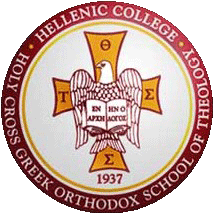"The Church as a Mission - Part 3: The Liturgy after the Liturgy"
The Church as a Mission
Part 3 - The Liturgy after the Liturgy
Fr. Alexander Schmemann’s Liturgical Theology Revisited
Dr. Athanasios N. Papathanasiou
Dr Theology, Lecturer at the Hellenic Open University (Athens)
2.2. The Liturgy after the Liturgy
In the Eucharistic typicon, says Schmemann, there are two movements which are complementary. First, there is the upward movement, the Church’s ascension to heaven: its sanctification, its withdrawal from the world and its entry into the “new aeon”. Secondarly, there is its return to the world. The celebrant’s exclamation “Let us go forth in peace” which concludes the Divne Liturgy is an order, the final commandment by which the congregation is led out of the church.
“The Eucharist is always the End, the sacrament of the Parousia, and yet it is always the beginning, the starting point: now mission begins…Without this ascension into the Kingdom we would have nothing to witness to. Now, having once more become ‘His people and His interitance’, we can do what Christ wants us to do: ‘You are witnesses of these things’ (Luke 24:48). The Eucharist, transforming ‘the Church into what it is’, transforms it into mission.”
“Then the priest says: ‘Let us depart in peace’. This does not mean, of course, that having accomplished our religious duty we can now simply go home and ‘relax’. How can one return from the Kingdom? And yet we are given this order, and it is precisely as an order that those words must be understood. This gives the Eucharist its last dimension – that of Mission.”
It is worth nothing in the above quotations that he does not see the “liturgy after the Liturgy” as a mere consequence of the Liturgy (i.e. something that can be lacking without impairing the Liturgy’s very self), but a dimension of the Eucharist, in the sense that the Eucharist involves not only its celebration, but also that which flows from it!
This position (that that which flows from the Eucharist is a structural element of the Eucharist) is supported by the fact that Fr. Alexander considers the prayers of the catechumens not simply a preliminary to the Liturgy, but an integral part of it! And he does not regard the world as a vehicle of mission in contracts to the Eucharist, but understands this too as a sacrament and an element of the liturgy. Fr Alexander disagrees with those who overlook the fact that the liturgy of the world and the celebration of the Eucharist are two inseparable parts that together make up the Eucharist. The fact that the Church has called the entire first part of the Eucharistic synaxis “the liturgy of the catechumens” is something that we cannot ignore or dispense with
“without touching something very important to the basic meaning of the liturgy… The prayers for the catechumens are above all a liturgical expression of a fundamental calling of the Church – precisely the Church as mission. The Church came into the world as mission – ‘Go into all the world and preach the gospel to the whole creation’ (Mk 16:15) – and cannot, without betraying her nature, cease to be mission. Historically, of course, the prayers for the catechumens were introduced at a time when the Church not only contained the institution of the catechumenate but in actuality considered herself directed toward the world with the aim of converting it to Christ, when she considered the world as an object of mission. Then the historical setting, changed, and it seemed that the world has become Christian. But do we not live again today in a world that has either turned away from Christianity or has never even heard of Christ? It is not mission again in the Centre of Church consciousness? And is not a sin against this basic calling when the Church, the ecclesial community, locks herself in her ‘inner’ life and considers herself called only ‘to attend to the spiritual needs’ of her members and thus for all intents and purposes denies that mission is a basic ministry and task of the Church in ‘this world’? Perhaps in our day it is important precisely to preserve the structure of worship that conjoins mission and the fruits of mission: the ‘liturgy of the catechumens’ and the ‘liturgy of the faithful’. For whom do we pray when we hear the petition of the Litany of the Catechumens…? In the first place, of course, for all those who are indeed about to enter the Church…But even more, for those whom we could draw to the ‘Sun of Righteousness’, were it not for our laziness, our indifference, our habit of considering the Church ‘our’ property, existing for us and not for the divine task, not for him who ‘desires all men to be saved and to come to the knowledge of the truth’. Thus, while preserving its direct meaning, the prayers for the catechumens must become for us a constant reminder and judgment: what are you doing – what is your Church doing – for Christ’s mission in the world? How are you fulfilling the basic command of the Head of the Church: ‘go into the world and preach the gospel to all creation’.

